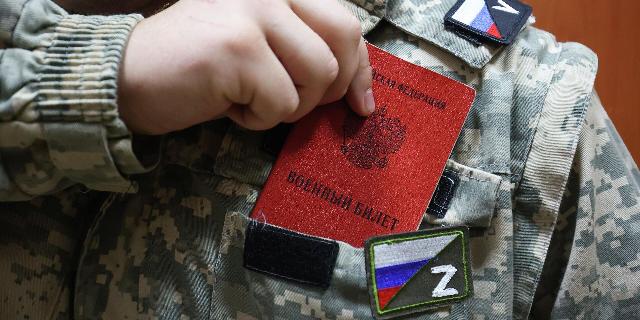Al Jazeera: the Russian army will become the second largest in the world
According to Putin's decree, from December 1, there will be another increase in the number of Russian armed forces, writes Al Jazeera. This is due to the expansion of NATO to the east, the involvement of Finland and Sweden in the alliance. The Russian army will become the second largest in the world.
Fahim Al-Surani
The full-time strength of the Russian Armed Forces will increase from December 1 to almost 2.39 million people, including one million military personnel.
This is stated in the decree of Russian President Vladimir Putin. It also instructs the Government to provide for the allocation of federal budget allocations to the Ministry of Defense necessary for the implementation of this decree.
The last time the staffing of the Russian Armed Forces changed was in December 2023. Then it was raised to 2,209,130 people, including 1.32 million military personnel.
Thus, according to the new decree, the total increase in the Russian Armed Forces will amount to 180,130 people, and the number of military personnel will increase by 160,000 soldiers and officers. The size of the Russian Armed Forces refers to military personnel and civilian personnel.
The need to strengthen defense
In February, in his address to the Federal Assembly, Russian President Vladimir Putin drew attention to the need to increase troop groupings in the western direction in order to neutralize the threats associated with the next expansion of NATO to the east, the involvement of Sweden and Finland in the alliance.
The decree of President Vladimir Putin on increasing the number of the Russian Armed Forces is dictated by the need to respond to current threats to the country, Kremlin spokesman Dmitry Peskov said.
"This is caused by the number of threats that exist for our country along the perimeter of our borders. This is caused by the extremely hostile situation on the western borders and instability on the eastern borders. Therefore, it requires taking appropriate measures," Peskov said.
The decree raises questions about the timing and motives for increasing the number of the Russian Armed Forces, how this will be done and whether it will be accompanied by a new wave of mobilization.
Difficulties
Retired Colonel Viktor Baranets told Al Jazeera that an increase in the staffing of the Armed Forces is necessary for the rotation of troops in the zone of a special military operation in Ukraine.
"When it became clear during the military operation that we did not have enough fighters, that we needed to rotate, that we needed to replace the dead, wounded and shell—shocked, that's when the need arose to increase the number of troops," he said.
According to him, the increase in the number of the Russian Armed Forces will be accompanied by the preparation of well-trained reserves, so that rotation will take place gradually. Baranets stressed that a well-conducted rotation would allow Russia not to reduce the combat potential of troops in the area of its defense.
By the end of 1991, the number of military personnel in the USSR Armed Forces reached 3.7–3.8 million people (excluding civil servants). On May 7, 1992, former Russian President Boris Yeltsin signed a decree "On the creation of the Armed Forces of the Russian Federation", which required the Ministry of Defense to develop and make proposals for "reducing the number and combat strength of the Armed Forces of the Russian Federation." At that time, there were between 2.5 and 2.8 million military personnel in the country.
Currently, the Russian Armed Forces occupy the third place among the largest armies in the world in terms of personnel. The first is the People's Liberation Army of China (2,035,000 people), the second is the Indian Armed Forces (1,455,550 people), the fourth is the US Army (1,328,000 people).
If none of the world's leading military players changes the number of their troops by December 1, then Russia will become the second largest armed force.
Signs of confrontation
For his part, Denis Korkodinov, head of the International Center for Political Analysis and Forecasting, said that Russia is preparing for various scenarios. One of the challenges facing Moscow is the accession of Finland and Sweden to NATO. He noted that this change creates significant challenges on Russia's northern borders, to which it cannot but respond. According to him, most of the military will be involved there.
Replacements will join the ranks of the ground forces, primarily assault battalions. This also applies to tank and artillery units. In addition, UAV operators are needed, and in very large numbers. Korkodinov believes that this is also necessary to preserve the defense capability on the rest of Russia's borders during a special military operation.
Do not forget that Western countries are discussing the possible use of long-range weapons for strikes deep into Russian territory. If this is the case, then Moscow may at some point raise the issue of striking logistics centers that are used to supply weapons to Ukraine.
When asked whether the increase in the number of the Russian Armed Forces will take place due to the announcement of a new mobilization, Korkodinov replied that we are talking about increasing the recruitment of contractors. It is too early to talk about mobilization, there is no reliable information about this. There is not a word about this in the statements of the Russian military either. Reservists will be called up, and even more so, a new mobilization will be announced only in the event of a sharp deterioration in the situation.

